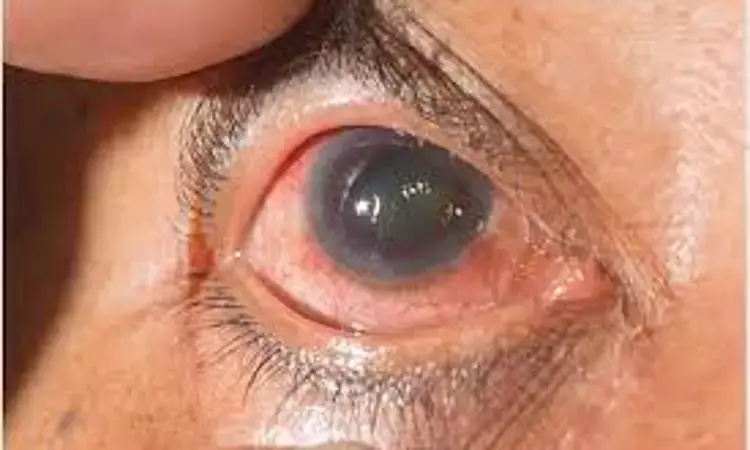- Home
- Medical news & Guidelines
- Anesthesiology
- Cardiology and CTVS
- Critical Care
- Dentistry
- Dermatology
- Diabetes and Endocrinology
- ENT
- Gastroenterology
- Medicine
- Nephrology
- Neurology
- Obstretics-Gynaecology
- Oncology
- Ophthalmology
- Orthopaedics
- Pediatrics-Neonatology
- Psychiatry
- Pulmonology
- Radiology
- Surgery
- Urology
- Laboratory Medicine
- Diet
- Nursing
- Paramedical
- Physiotherapy
- Health news
- Fact Check
- Bone Health Fact Check
- Brain Health Fact Check
- Cancer Related Fact Check
- Child Care Fact Check
- Dental and oral health fact check
- Diabetes and metabolic health fact check
- Diet and Nutrition Fact Check
- Eye and ENT Care Fact Check
- Fitness fact check
- Gut health fact check
- Heart health fact check
- Kidney health fact check
- Medical education fact check
- Men's health fact check
- Respiratory fact check
- Skin and hair care fact check
- Vaccine and Immunization fact check
- Women's health fact check
- AYUSH
- State News
- Andaman and Nicobar Islands
- Andhra Pradesh
- Arunachal Pradesh
- Assam
- Bihar
- Chandigarh
- Chattisgarh
- Dadra and Nagar Haveli
- Daman and Diu
- Delhi
- Goa
- Gujarat
- Haryana
- Himachal Pradesh
- Jammu & Kashmir
- Jharkhand
- Karnataka
- Kerala
- Ladakh
- Lakshadweep
- Madhya Pradesh
- Maharashtra
- Manipur
- Meghalaya
- Mizoram
- Nagaland
- Odisha
- Puducherry
- Punjab
- Rajasthan
- Sikkim
- Tamil Nadu
- Telangana
- Tripura
- Uttar Pradesh
- Uttrakhand
- West Bengal
- Medical Education
- Industry
Netarsudil used for treating glaucoma tied with Punctal stenosis: Study

Netarsudil may cause some bothersome and adverse side effects, including punctal stenosis after it is used for treating Glaucoma, according to a recent study published in Ophthalmology.
A study was conducted to report a series of patients who developed punctal stenosis secondary to the use of topical netarsudil for the treatment of glaucoma.
Patients using topical netarsudil for management of glaucoma and noted to have punctal stenosis ipsilateral to the eye(s) being treated with netarsudil were included. Each enrolled patients' chart was reviewed and alternative causes of punctal stenosis were sought. Photographs were obtained to document punctal stenosis for some patients. Presence of punctal stenosis after topical netarsudil use, and resolution of punctal stenosis after cessation of therapy.
Results:
Sixteen patients had punctal stenosis; 13 developed unilateral punctal stenosis while using netarsudil unilaterally, and 3 patients developed bilateral punctal stenosis with bilateral use. The time from initiation of netarsudil to recognition of symptoms or documentation of punctal stenosis ranged from 2 to 35 months (median 12, mean 14.0 ± 8.7 months). Thirteen patients endorsed tearing, but two had no symptoms. Ectropion was seen in one eye. Corneal verticillata was noted in 14 (87.5%) patients. In 8 cases, netarsudil was discontinued and the punctal stenosis was reversed, with a resolution of associated symptoms.
Thus, Netarsudil use can lead to the development of reversible punctal stenosis. This inflammation-mediated stenosis may cause tearing and associated symptoms and may be sufficiently severe to require discontinuation of treatment. In this case series, all patients who discontinued treatment had a reversal of their punctal stenosis and associated symptoms.
Reference:
Punctal stenosis associated with topical netarsudil use by Thomas M. Meirick, et al. published in the Ophthalmology.
https://doi.org/10.1016/j.ophtha.2022.02.025
Keywords:
Netarsudil, adverse side effects, Glaucoma, Punctal stenosis, topical application, topical netarsudil, Thomas M. Meirick, Raghu C. Mudumbai, Matthew M. Zhang, Philip P. Chen, Ophthalmology, side effect, tearing, nasolacrimal duct obstruction
Dr. Shravani Dali has completed her BDS from Pravara institute of medical sciences, loni. Following which she extensively worked in the healthcare sector for 2+ years. She has been actively involved in writing blogs in field of health and wellness. Currently she is pursuing her Masters of public health-health administration from Tata institute of social sciences. She can be contacted at editorial@medicaldialogues.in.
Dr Kamal Kant Kohli-MBBS, DTCD- a chest specialist with more than 30 years of practice and a flair for writing clinical articles, Dr Kamal Kant Kohli joined Medical Dialogues as a Chief Editor of Medical News. Besides writing articles, as an editor, he proofreads and verifies all the medical content published on Medical Dialogues including those coming from journals, studies,medical conferences,guidelines etc. Email: drkohli@medicaldialogues.in. Contact no. 011-43720751


